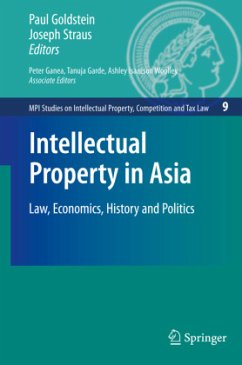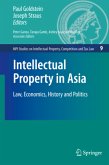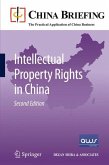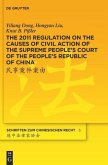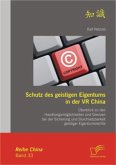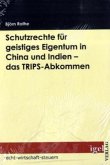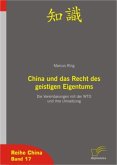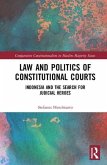This collection illustrates the available infrastructures for the application and enforcement of intellectual property in Asia's most important emerging markets. It is unique in that it not only gives an overview of intellectual property laws and practice in selected Asian countries but also embeds the history and present state of intellectual property in the wider socioeconomic context of that respective country. Each country report studies the impediments to protecting intellectual property in light of particular domestic circumstances. The reports further discuss the possibility of changes in the given socioeconomic political and cultural infrastructure which may have an impact on the protection of intellectual property. In this regard, it serves as a useful tool to understanding the dynamics behind the positions in selected Asian countries that may be relevant in bilateral und multilateral contexts.
Introduction Intellectual property rights foster innovation. But if, as it surely does, "intellectual property" means not just intellectual property rules-the law of patents, copyrights, trademarks, designs, trade secrets, and unfair competition-but also intellectual property institutions-the courts, police, regulatory agencies, and collecting soc- ties that administer these rules-what are the respective roles of intellectual property rules and institutions in fostering creativity? And, to what extent do forces outside intellectual property rules and institutions-economics, culture, politics, history-also contribute to innovation? Is it possible that these other factors so overwhelm the impact of intellectual property regimes that it is futile to expect adjustments in intellectual property rules and institutions to alter patterns of inno- tion and, ultimately, economic development? It was to address these questions in the most dynamic region of the world today, Asia, that we invited leading country experts to contribute studies that not only summarize the current condition of intellectual property regimes in countries ranging in economic size from Cambodia to Japan, and in population from Laos to China, but that also describe the historical sources of these laws and institutions; the realities of intellectual property enforcement in the marketplace; and the political, economic, educational, and scientific infrastructures that sustain and direct inve- ment in innovative activity. A.
Introduction Intellectual property rights foster innovation. But if, as it surely does, "intellectual property" means not just intellectual property rules-the law of patents, copyrights, trademarks, designs, trade secrets, and unfair competition-but also intellectual property institutions-the courts, police, regulatory agencies, and collecting soc- ties that administer these rules-what are the respective roles of intellectual property rules and institutions in fostering creativity? And, to what extent do forces outside intellectual property rules and institutions-economics, culture, politics, history-also contribute to innovation? Is it possible that these other factors so overwhelm the impact of intellectual property regimes that it is futile to expect adjustments in intellectual property rules and institutions to alter patterns of inno- tion and, ultimately, economic development? It was to address these questions in the most dynamic region of the world today, Asia, that we invited leading country experts to contribute studies that not only summarize the current condition of intellectual property regimes in countries ranging in economic size from Cambodia to Japan, and in population from Laos to China, but that also describe the historical sources of these laws and institutions; the realities of intellectual property enforcement in the marketplace; and the political, economic, educational, and scientific infrastructures that sustain and direct inve- ment in innovative activity. A.
Aus den Rezensionen:
"... Insgesamt stellt der Sammelband ein beeindruckendes Übersichtswerk auf hohem Niveau dar. Seinem Anspruch, die Dynamiken des Immaterialgüterrechtsschutzes in Asien eingehend aufzuzeigen, ist es vollumfänglich gerecht geworden ... ist das Werk für Entscheidungsträger, Wissenschaftler und Praktiker in einem beginnenden asiatischen Zeitalter unverzichtbar ..." (Andrea Wechsler, in: Zeitschrift für Geistiges Eigentum / Intellectual Property Journal, 2011, Vol. 3, S. 352f.)
"... Insgesamt stellt der Sammelband ein beeindruckendes Übersichtswerk auf hohem Niveau dar. Seinem Anspruch, die Dynamiken des Immaterialgüterrechtsschutzes in Asien eingehend aufzuzeigen, ist es vollumfänglich gerecht geworden ... ist das Werk für Entscheidungsträger, Wissenschaftler und Praktiker in einem beginnenden asiatischen Zeitalter unverzichtbar ..." (Andrea Wechsler, in: Zeitschrift für Geistiges Eigentum / Intellectual Property Journal, 2011, Vol. 3, S. 352f.)

